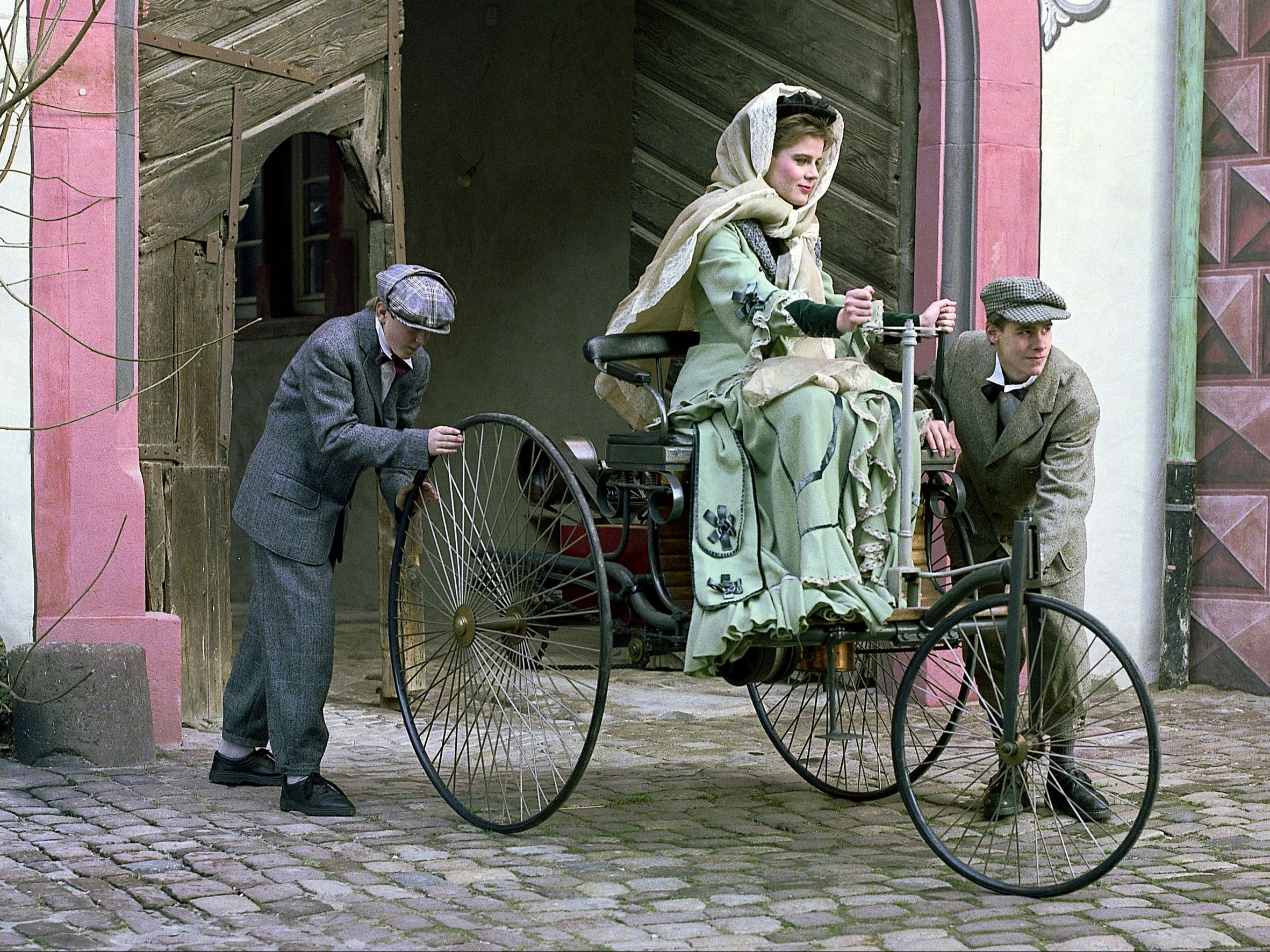The Mother of Car Culture
Mother’s Day is the annual holiday when we show appreciation to the moms and maternal figures in our lives. Greeting cards, fresh-cut flowers, homemade gifts, bubbly champagne at brunch, burnt toast on a tray of breakfast in bed—we all have our own way of expressing gratitude to the person who brought us into this world.
What better holiday to celebrate Bertha Benz? The woman whose support for her husband, Karl (Carl) Benz, would unintentionally spark what we now partake in as car culture. Bertha Benz became the mother of car culture on August 5, 1888, when she embarked on the first-ever road trip with her two sons in her husband’s no.3 petroleum-powered motor car—without telling him.
Bertha Benz’s influence in the production of the Patent-Motorwagen goes far beyond taking it on a test drive. She financed her husband’s work and paid for the original patent (German patent number 37435) granted in November 1886. At the time, a married woman in Germany was not allowed to hold a patent or be considered an inventor. Nevertheless, her contribution continued in areas Mr. Benz was too busy or uninterested in focusing on, such as generating publicity and marketing their invention into a successful business.
Nothing Sells a Car Like the Car Itself
In terms of marketing, nothing sells the product like showing the product in action. So, if you want to sell the idea of private motorized transportation, people need to see it working. That was the core ideal for Bertha Benz when she took her two sons, Richard and Eugen, and drove the Patent-Motorwagen prototype from Mannheim to Pforzheim 65 miles (106km) away to visit her mother. She did so without telling anyone, including her husband, following the age rule of being easier to ask for forgiveness than permission. Besides, what good is an invention if you don’t believe in it, right?
Sneaking the car out of the workshop meant having her sons push it out while Karl Benz was asleep. Those who enjoy the freedom of the automobile can appreciate or remember sneaking a vehicle past supervision using leg power. But, being a lady, she left a note on the kitchen table informing her husband about the journey and reassuring him that they would be back in a few days. Of course, the note didn’t say what method of transportation they would be taking, and one can only imagine the mixed flood of emotions he must have felt when he became the first victim of grand theft auto.
History’s First Road Trip
The significance of Bertha Benz’s mission to drive a long distance in 1888 cannot be understated. This was an era when these rudimentary machines could only travel the equivalent of around the block with a mechanic riding shotgun for when it eventually broke down. The Benz Patent-Motorwagen prototype Bertha Benz drove was powered by a 954cc single-cylinder gas engine producing under two horsepower, allowing it to reach a break-neck top speed of 10 mph. A 4.5-liter carburetor housed the car’s fuel supply instead of a designated fuel tank.
The first fuel stop was in the town of Wiesloch. Back then, the only way to purchase the petrol solvent Ligroin to run the Motorwagen was from the local chemist at the town pharmacy. Buying fuel turned the pharmacy into the first gas station in the world. History records of breakdowns included a blocked fuel line, which Bertha Benz fixed using a hat pin. She also used her garter to insulate an ignition wire.
How many of us have been forced to MacGyver or Jerry-rigged a temporary fix using whatever was at hand to stay roadworthy?
Along the journey, Bertha Benz asked a town’s local shoe cobbler to install shoe leather on the failing wooden brakes, thus inventing brake pads to help reduce friction and heat buildup. Moreover, this road trip served as a shakedown to highlight weak areas that could be improved, like the two-forward gear transmission that wasn’t strong enough to carry the Motorwagen up hills, requiring a third gear.
Bertha Benz and her sons reached Pforzheim after sundown and informed her husband via telegram that they had made it safely. Three days later, they made it home, completing the estimated 120-mile round trip successfully and proving that the Patent-Motorwagen worked as a means of private transportation. The Benz Patent-Motorwagen went on sale later than summer in 1888 with a third gear and brake pads as standard.
But beyond that. Her test drive essentially paved the way for how we test, promote, and enjoy cars today.
Bertha Benz Legacy
Modern vehicles undergo thousands of miles of road testing to fix issues. Car companies advertise and market their vehicles using the media and car writing geeks like me to garner publicity for their performance, design and versatility. Most importantly, we use cars to explore and travel as we please through the freedom of personal transport.
Car culture is expressed globally through personalized pieces of glass, rubber, and treated metals. It’s not unreasonable to say that if Bertha Benz had not taken the first road trip, someone else would, but she beat them to the punch.
So, we owe her a thank you when we point our car at the horizon and travel on seemingly endless miles of paved roads littered with convenience fuel stations, restaurants, and hotels in route towards our destination. Someone had to take the first drive, and that someone was Bertha Benz.






Comments
Loading comments...
Failed to load comments. Please try again later.
Leave a Comment